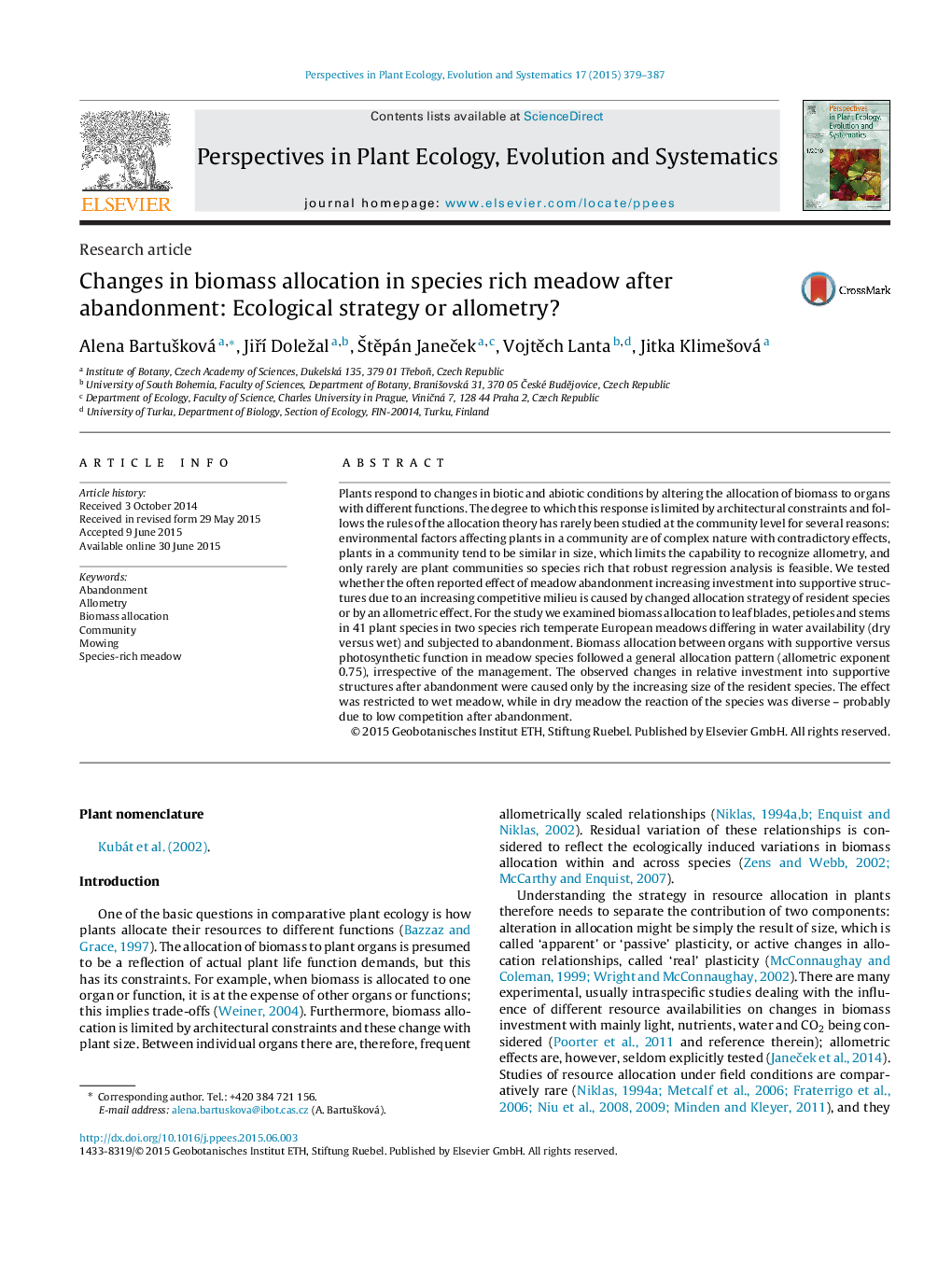| کد مقاله | کد نشریه | سال انتشار | مقاله انگلیسی | نسخه تمام متن |
|---|---|---|---|---|
| 4400923 | 1307032 | 2015 | 9 صفحه PDF | دانلود رایگان |
• We examine impact of varied managements on biomass allocation in meadow communities.
• 41 plant species in two European meadows were subjected to mowing or abandonment.
• Meadow species follow general allocation pattern, irrespective of the management.
• Abandonment results in higher relative investment into stems but only in one meadow.
Plants respond to changes in biotic and abiotic conditions by altering the allocation of biomass to organs with different functions. The degree to which this response is limited by architectural constraints and follows the rules of the allocation theory has rarely been studied at the community level for several reasons: environmental factors affecting plants in a community are of complex nature with contradictory effects, plants in a community tend to be similar in size, which limits the capability to recognize allometry, and only rarely are plant communities so species rich that robust regression analysis is feasible. We tested whether the often reported effect of meadow abandonment increasing investment into supportive structures due to an increasing competitive milieu is caused by changed allocation strategy of resident species or by an allometric effect. For the study we examined biomass allocation to leaf blades, petioles and stems in 41 plant species in two species rich temperate European meadows differing in water availability (dry versus wet) and subjected to abandonment. Biomass allocation between organs with supportive versus photosynthetic function in meadow species followed a general allocation pattern (allometric exponent 0.75), irrespective of the management. The observed changes in relative investment into supportive structures after abandonment were caused only by the increasing size of the resident species. The effect was restricted to wet meadow, while in dry meadow the reaction of the species was diverse – probably due to low competition after abandonment.
Journal: Perspectives in Plant Ecology, Evolution and Systematics - Volume 17, Issue 5, October 2015, Pages 379–387
